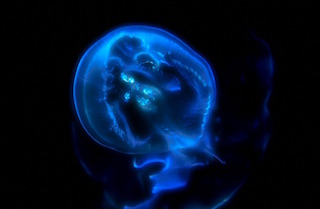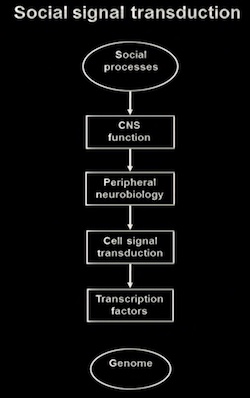Epigenetics (Lifestyle)
Epigenetics (literally, control beyond genetics) is a new field of biology that is exploring the effect of the environment on cellular behavior. The "environment" includes one's physical, social, and electromagnetic environment as well as beliefs, perceptions, lifestyle, habits, behaviors, and mind-body practices such as Qigong. Gene expression is the process by which proteins are manufactured from instructions stored in the DNA.
Humans have about the same number of genes as rats, mice, and other mammals and roughly 4500 more genes than plants, 10900 more genes than roundworms, and 16400 more genes than fruit flies. There simply aren't enough genes to account for the complexity of human biological processes, behavior, and physical structure. The complexity is made possible by several factors. One factor is regulatory proteins which direct the activity of the genes. A cell's nucleus contains regulatory proteins and DNA. Environmental signals affect the interaction between the regulatory proteins and the DNA within the nucleus as well as the function of the cell through interaction with proteins in the cell cytoplasm, cytoskeleton, and the cell membrane.
The epigenome turns the expression of genes on or off through many environmental influences, including prenatal care, drugs, diet, toxins, social interactions, and radiation. Epigenetic mechanisms include phosphorylation of proteins, methylation and histone modification of DNA, and noncoding RNA. In addition, research indicates that "junk DNA" plays an important role in gene expression and is another proposed pathway for environmental signals to affect gene expression.
According to some epigenetics researchers, the true "brain" of every cell is not the nucleus but the cell's membrane which interacts with and responds to environmental signals. A broader view sees the environmental signals affecting proteins both inside and outside the cell, as well as on the membrane. Epigenetics gives a mechanism for a bridge between the energetic basis and the biomolecular/chemical physiological basis of our existence. The "energetic basis" is our fundamental bioenergetic structure and being interacting directly with environmental signals which are different forms of energy, such as light, electromagnetism, sound, heat, vibration, emotions, thought, and the practice of Qigong. See also Bioenergetic Basis of Life.
On the road to resilience: Epigenetic effects of meditation. At the molecular level, the effects of both stress and meditation are elicited epigenetically through a set of mechanisms that regulate gene expression as well as the circulating neuroendocrine and immune effectors. Epigenetic mechanisms constantly reshape genome activities in response to external stimuli, representing a molecular interface between organism and environment. In the present work, we aimed to review the current knowledge on the correlation between epigenetics, gene expression, stress and its possible antidote, meditation. PMID: 36863800.
Editing the brain: How new epigenetic tools could rewrite our understanding of memory and more. The practice of Qigong regulates the expression of genes and creation of proteins through the production of transcription factors, such as hormones, that act as catalysts to gene transcription. New DNA technologies allow sampling the mix of genes that are being expressed at any moment. An analogy would be scooping up a glass of water from a rushing stream and testing how clear it is. Researchers can now identify whether genes are being expressed for stress and inflammation or for relaxation and regeneration. What gets expressed depends upon what someone is thinking or doing, and this is where Qigong becomes epigenetics. Epigenetic changes are implicated in a host of neural conditions, from Alzheimer's-related memory loss to depression. Now, a revolutionary set of molecular editing tools is allowing scientists to alter the epigenome like never before. If the human genome is the book of life, then the epigenome is its editor. Epigenetic marks -- chemical tags that switch genes on and off -- allow the body to produce more than 200 cell types from the same genetic code. Creating a neuron, for example, involves silencing a third of the genome.

Epigenetic Mechanisms of Integrative Medicine (IM). IM's ability to affect healing is due at least in part to epigenetic mechanisms. This hypothesis is based on a mounting body of evidence that demonstrates a correlation between the physical and mental effects of IM and modulation of gene expression and epigenetic state.
NIH-Supported Researchers Map Epigenome of More Than 100 Tissue and Cell Types.
National Institutes of Health - Office of Strategic Coordination - The Commond Fund. Epigenomics.



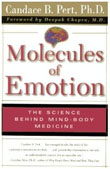 "Every cell in our body has a characteristic vibration. When these cells vibrate at a certain rate and in a certain pattern, the body functions well and the person feels good. When they vibrate at a different rate and pattern, the body functions less well and the person feels not so good … every thought is a pattern of energy characterized by a certain vibratory rate and pattern … the vibratory pattern of the thought and its consequent emotion are experienced throughout the entire body, by each cell, and this vibratory influence triggers the release of certain kinds of neuropeptides which flood through the body … thus thoughts are patterns of energy which influence the functions of the whole body." Dr. Candace Pert in
"Every cell in our body has a characteristic vibration. When these cells vibrate at a certain rate and in a certain pattern, the body functions well and the person feels good. When they vibrate at a different rate and pattern, the body functions less well and the person feels not so good … every thought is a pattern of energy characterized by a certain vibratory rate and pattern … the vibratory pattern of the thought and its consequent emotion are experienced throughout the entire body, by each cell, and this vibratory influence triggers the release of certain kinds of neuropeptides which flood through the body … thus thoughts are patterns of energy which influence the functions of the whole body." Dr. Candace Pert in 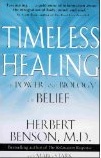


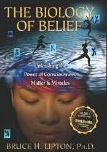 "Specific frequencies and patterns of electromagnetic radiation regulate and control gene regulation, cell division, cell differentiation, morphogenesis (the process by which cells assemble into organs and tissues), hormone secretion, nerve growth and function....Though these research studies have been published in some of the most respected mainstream biomedical journals, their revolutionary findings have not been incorporated into the medical school curriculum." Bruce Lipton:
"Specific frequencies and patterns of electromagnetic radiation regulate and control gene regulation, cell division, cell differentiation, morphogenesis (the process by which cells assemble into organs and tissues), hormone secretion, nerve growth and function....Though these research studies have been published in some of the most respected mainstream biomedical journals, their revolutionary findings have not been incorporated into the medical school curriculum." Bruce Lipton: 